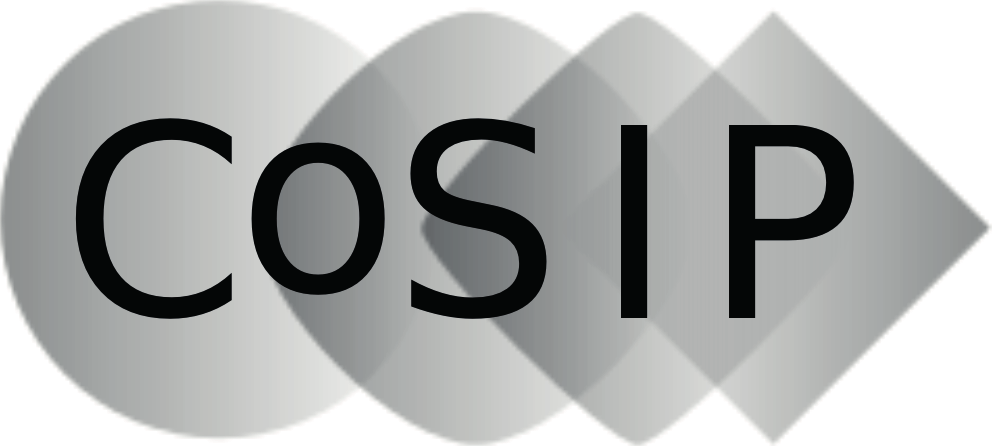EXploiting structure in comPREssed Sensing using Side constraints (EXPRESS)
Nutzung von Struktur im Compressed Sensing durch Nebenbedingungen (EXPRESS)
- Professor Dr.-Ing. Martin Haardt
Technische Universität Ilmenau
Fachgebiet Nachrichtentechnik
- Professor Dr.-Ing. Marius Pesavento
Technische Universität Darmstadt
Institut für Nachrichtentechnik
Fachgebiet Robuste Sensorsignalverarbeitung
- Professor Dr. Marc Emanuel Pfetsch
Technische Universität Darmstadt
Fachbereich Mathematik
AG Discrete Optimization
Zusammenfassung
Im EXPRESS-Projekt untersuchen wir das Compressed Sensing (CS) Problem in der Gegenwart von Seiteninformationen und zusätzlichen Nebenbedingungen. Diese Seiteninformationen und Nebenbedingungen beruhen auf einer speziellen Struktur im Systemmodell und können auf die Struktur des Messsystems oder der Sensing-Matrix (Shift-Invarianz, Struktur der Subarrays, u.s.w.), die Struktur der Wellenformen (endliches Alphabet, Box-Restriktionen, Einschränkungen der Konstellation wie konstanter Betrag oder Non-Circularity, u.s.w.), die Sparsity Struktur der Signale (Block- oder Gruppen-Sparsity, Rang-Sparsity, u.s.w.) oder des Kanals, sowie die Struktur der Messungen (Quantisierungseffekte, K-Bit Quantisierung, Betragsmessungen, u.s.w.) zurückgeführt werden. Wir werden untersuchen, in welchem Sinne Strukturinformationen in das CS Problem eingebracht werden können und wie sie bestehende Algorithmen und theoretischen Ergebnisse beeinflussen. Basierend auf dieser Analyse werden wir neue Algorithmen und theoretischen Ergebnisse entwickeln, die besonders für diese Modelle geeignet sind. Es wird erwartet, dass die Nutzung der Struktur im Messsystem, d.h. der Abtastmatrix, auf schnelle CS-Algorithmen mit neuartigen Modellidentifizierbarkeitsbedingungen und zu perfekten Rekonstruktionsergebnissen führen kann. In diesem Sinne können wir durch die Nutzung der Struktur in den beobachteten Signalformen und der Sparsity-Struktur der Signaldarstellung CS-Algorithmen mit reduzierter Komplexität, vereinfachten Rekonstruktionsbedingungen und verbesserten Konvergenzeigenschaften entwerfen. Auf der anderen Seite erwarten wir, dass quantisierte Messungen, die von großer Bedeutung sind, wenn man kosteneffiziente Hardware und verteilte Messsysteme berücksichtigt, in der Regel zu einem Verlust von Informationen führen, für den neuen Algorithmen und perfekte Rekonstruktionsbedingungen hergeleitet werden müssen.
Als eine Anwendung betrachten wir in diesem Projekt die gemeinsame (verteilte) mehrdimensionale räumliche Spektralschätzung, d.h. Sensing entlang der Frequenz-, Zeit- und Raum-Achsen über ein Netzwerk von Mehrantennensystemen. Abhängig vom berücksichtigten Signalmodell, kann die Frequenz-, Zeit- und Ortsabhängigkeit der Messungen auf verschiedene Weise entstehen. Zum Beispiel können die interessierenden Sensing-Parameter die Einfallsrichtungen, Trägerfrequenzen und Dopplerverschiebungen beinhalten. Das EXPRESS Projekt wird die zugrundeliegenden Sparsity-Eigenschaften des Signalmodells für diese Anwendung unter Einbeziehung der oben genannten unterschiedlichen Arten von Seiteninformation ausnutzen.
Summary
In the EXPRESS project we study the compressed sensing (CS) problem in the presence of side information and additional constraints. Side information as well as constraints are due to a specific structure encountered in the system model and may originate from the structure of the measurement system or the sensing matrix (shift-invariance, subarray structure, etc.), the structure of the signal waveforms (integrality, box constraints, constellation constraints such as non-circularity, constant modulus, finite constellation size, etc.), the sparsity structure of the signal (block or group sparsity, rank sparsity, etc.) or the channel, as well as the structure of the measurements (quantization effects, K-bit measures, magnitude-only measurements, etc.). We will investigate in which sense structural information can be incorporated into the CS problem and how it affects existing algorithms and theoretical results. Based on this analysis, we will develop new algorithms and theoretical results particularly suited for these models. It is expected, on the one hand, that exploiting structure in the measurement system, i.e., the sensing matrix, can lead to fast CS algorithms with novel model identifiability conditions and perfect reconstruction/recovery results. In this sense, exploiting structure in the observed signal waveforms and the sparsity structure of the signal representation can lead to reduced complexity CS algorithms with simplified recovery conditions and provably enhanced convergence properties. On the other hand, we expect that quantized measurements, which are of great importance when considering cost efficient hardware and distributed measurement systems, will generally result in a loss of information for which new algorithms and perfect recovery conditions need to be derived.
As an application in this project, we consider collaborative (distributed) multi- dimensional spatial spectrum sensing, i.e., sensing along the frequency-, time-, and space-axes using a network of multi-antenna sensing devices. Depending on the signal model under consideration, the frequency-, time-, and space dependence of the measurements can emerge in several ways. For example, the sensing parameters of interest can include directions-of- arrival, carrier frequencies, and Doppler-shifts. The EXPRESS project aims at exploiting the underlying sparsity properties in the signal model for this application while incorporating the aforementioned various types of side information.
Preprints
J.-H. Lange, M. E. Pfetsch, B. M. Seib and A. M. Tillmann, Sparse Recovery With Integrality Constraints, August 2016
C. Steffens, M. Pesavento, M. E. Pfetsch, A Compact Formulation for the L21 Mixed-Norm Minimization Problem, June 2016.
Y. Yang, Marius Pesavento, A Unified Successive Pseudo-Convex Approximation Framework, June 2015.
T. Fischer and M. E. Pfetsch, Monoidal Cut Strengthening and Generalized Mixed-Integer Rounding for Disjunctive Programs, March 2016
Publications
J. Steinwandt, F. Roemer, M. Haardt, and G. Del Galdo, Deterministic Cramér-Rao bound for strictly non-circular sources and analytical analysis of the achievable gains, IEEE Transactions on Signal Processing, vol. 64, no. 17, pp. 4417 - 4431, Sept. 2016.
J. Steinwandt, F. Roemer, and M. Haardt, Sparsity-based direction-of-arrival estimation for strictly non-circular sources, Proc. IEEE Int. Conf. on Acoust., Speech, and Signal Processing (ICASSP), Shanghai, China, Mar. 2016.
J. Steinwandt, C. Steffens, M. Pesavento, and M. Haardt, Sparsity-aware direction finding for strictly non-circular sources based on rank minimization, Proc. IEEE Sensor Array and Multichannel Signal Processing Workshop (SAM), Rio de Janeiro, Brazil, July 2016, invited paper.
C. Steffens, Y. Yang, M. Pesavento, Multidimensional Sparse Recovery for MIMO Channel Parameter Estimation, 2016 European Signal Processing Conference, 29.08.-02.09.2016, Budapest, Hungary.
M. Pesavento, Y. Cheng, M. Pfetsch: Mixed-integer programming in signal processing and communications, Tutorial at the 40th IEEE International Conference on Acoustics, Speech and Signal Processing (ICASSP'15), Apr. 19th – 24th, 2015, Brisbane, Australia

